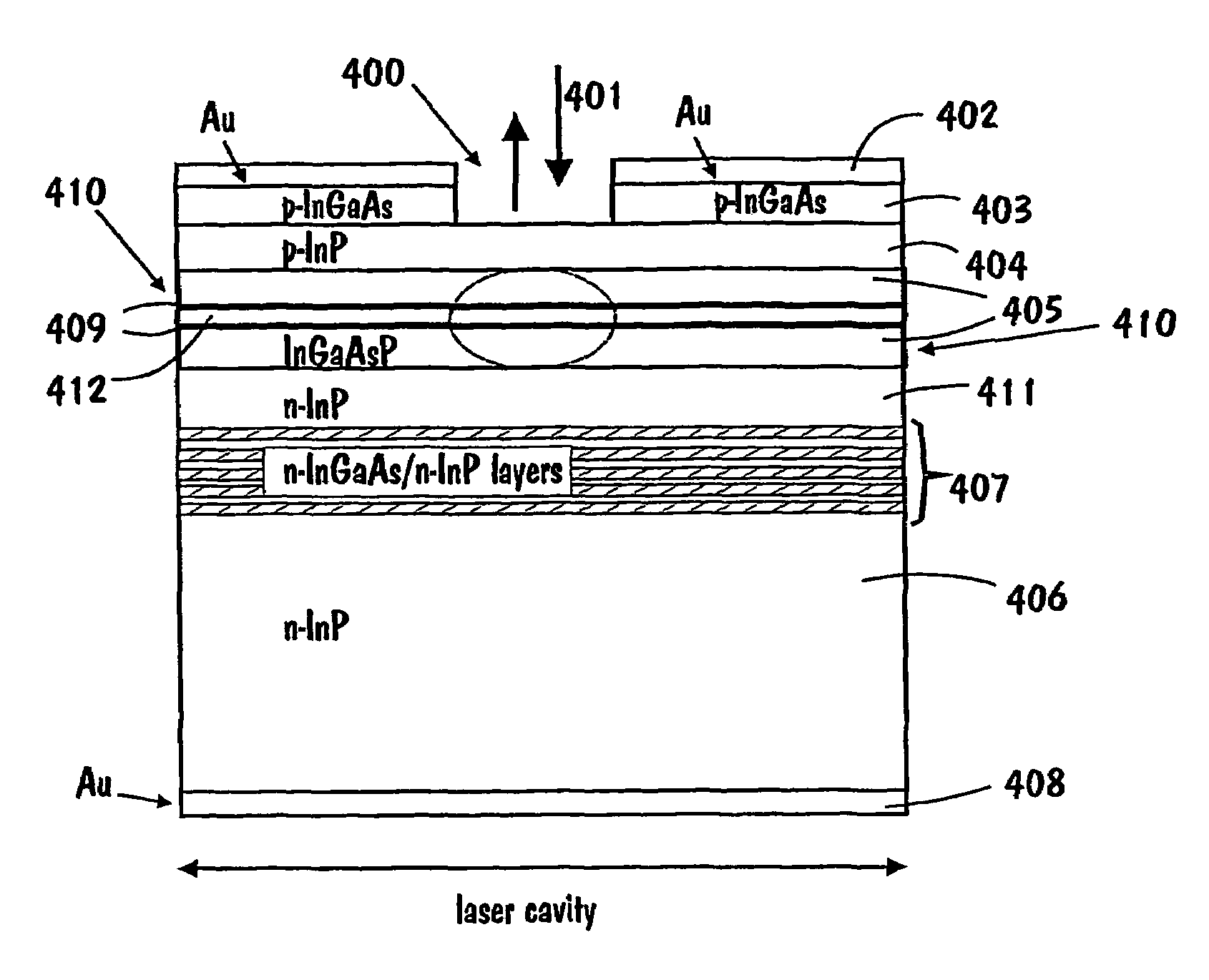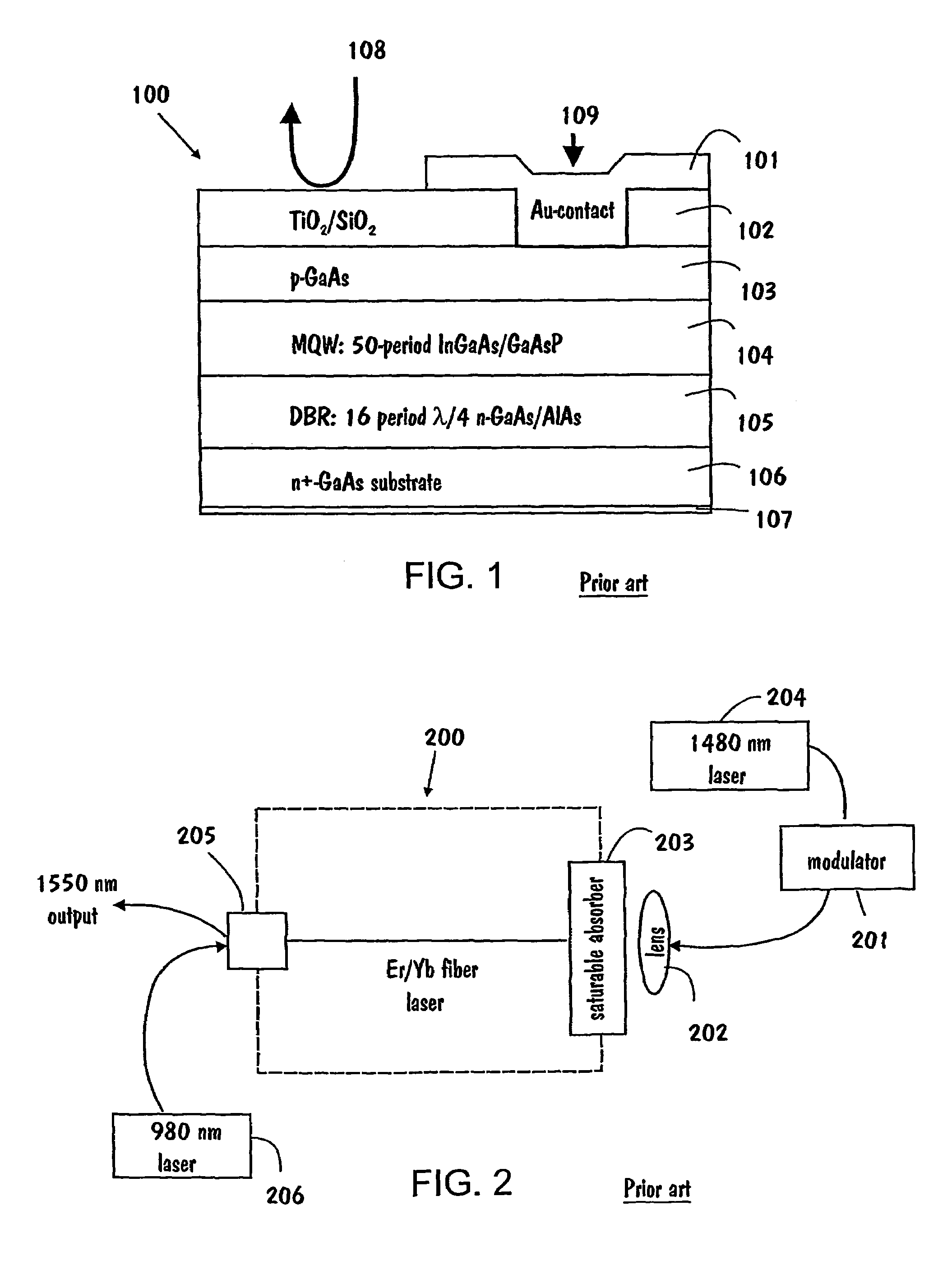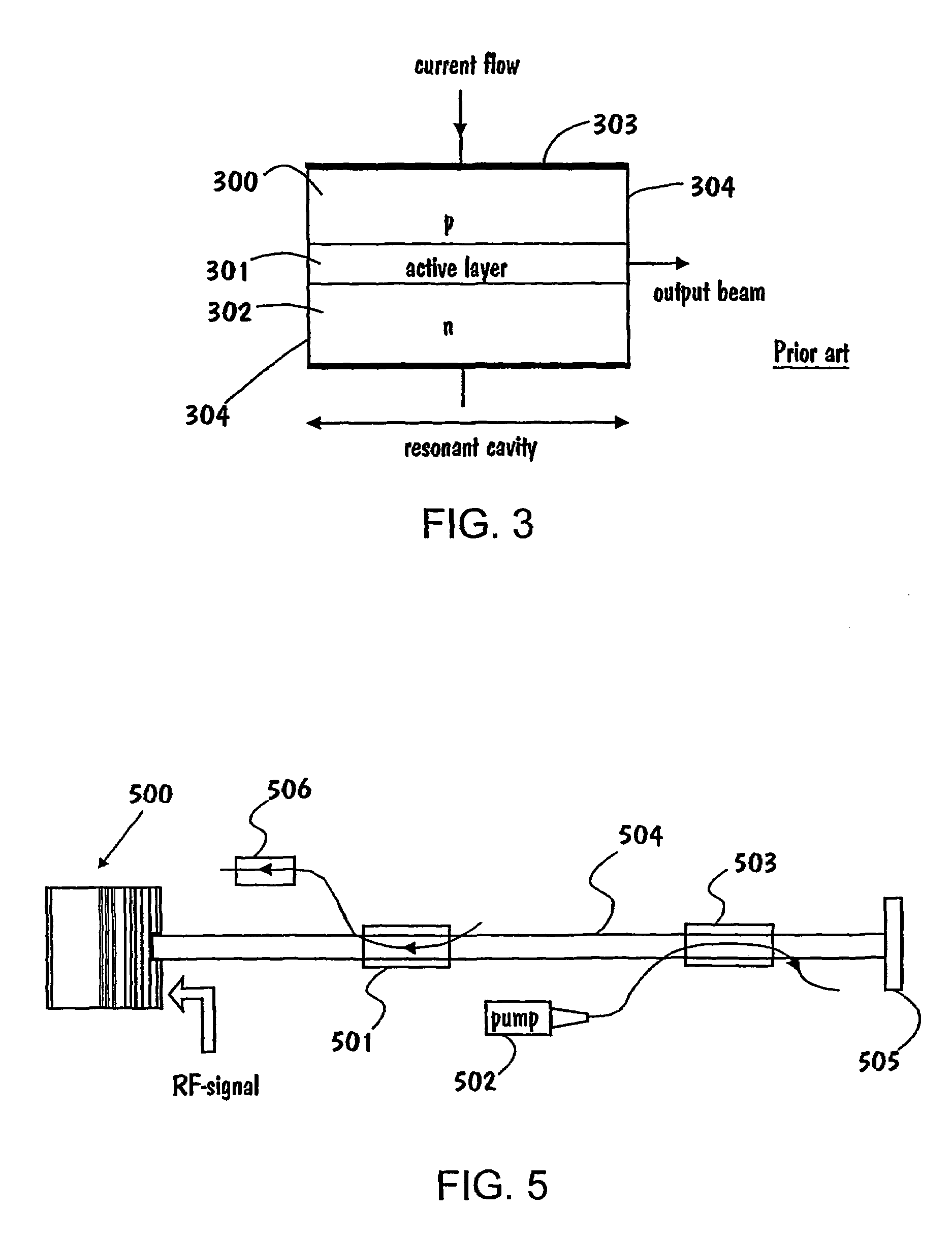Optical modulator
a technology of optical modulator and optical bandwidth, applied in the field of structure and operation of optical modulator, can solve the problems of low modulation contrast, low efficiency, and dramatic reduction of optical bandwidth of fabry-pérot structure, and achieve the effect of increasing the reflection
- Summary
- Abstract
- Description
- Claims
- Application Information
AI Technical Summary
Benefits of technology
Problems solved by technology
Method used
Image
Examples
Embodiment Construction
[0023]The basic idea of the invention is to integrate a semiconductor waveguide (edge-emitting type) laser diode with a multiple-quantum-well (MQW) saturable absorber to form a new kind of optical modulator. The modulator can be used in a wide variety of systems, such as in ultra-fast and wideband signal transmission and processing technologies.
[0024]First we will briefly examine the structure and operation of a laser in general by referring to FIG. 3. Then the structure and operation of the invention is considered in detail with reference to the examples in FIGS. 4a, 4b, and 5.
[0025]FIG. 3 illustrates a cross-sectional view of a semiconductor laser. The laser comprises an active material 301, e.g. MQW, placed between a p-type semiconductor 300, which is doped with suitable impurity atoms and has an excess concentration of holes, and an n-type semiconductor 302 that has an excess concentration of electrons. The refractive index of this lapsing medium or active layer 301 must be grea...
PUM
| Property | Measurement | Unit |
|---|---|---|
| wavelength | aaaaa | aaaaa |
| structure | aaaaa | aaaaa |
| metallic | aaaaa | aaaaa |
Abstract
Description
Claims
Application Information
 Login to View More
Login to View More - R&D
- Intellectual Property
- Life Sciences
- Materials
- Tech Scout
- Unparalleled Data Quality
- Higher Quality Content
- 60% Fewer Hallucinations
Browse by: Latest US Patents, China's latest patents, Technical Efficacy Thesaurus, Application Domain, Technology Topic, Popular Technical Reports.
© 2025 PatSnap. All rights reserved.Legal|Privacy policy|Modern Slavery Act Transparency Statement|Sitemap|About US| Contact US: help@patsnap.com



